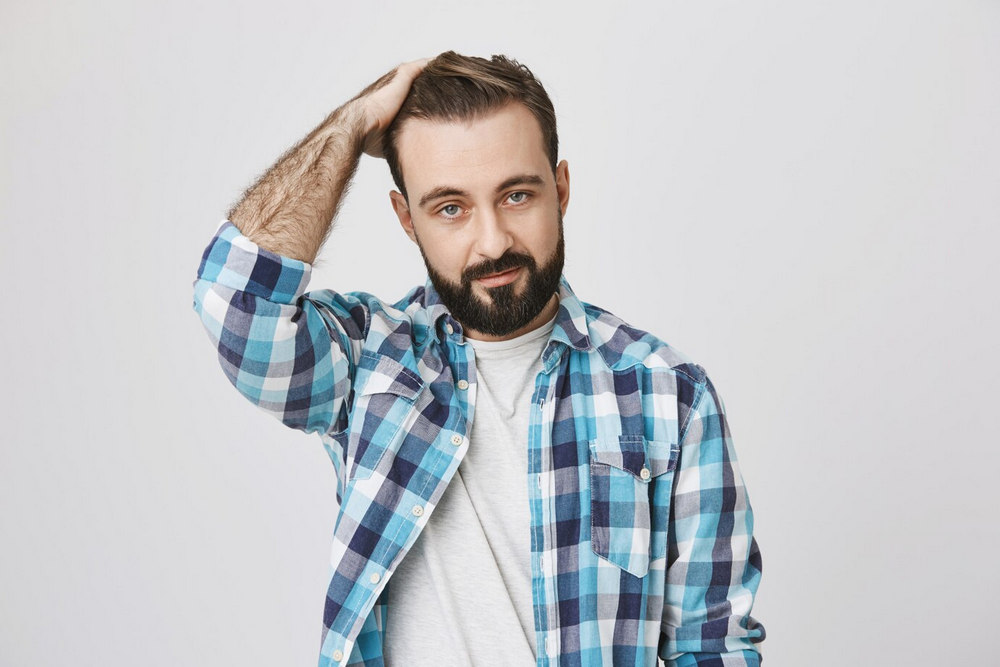Baldness is a phenomenon that affects people all over the world. From the age of 25, one in four men begins to lose hair, while after the age of 50, 50% of men are bald and when they reach old age that percentage increases to 98%.
Although these data are general, the statistics vary significantly depending on ethnic factors. Therefore, today on the Hairfix blog we will tell you what these factors are and how they influence the prevalence of baldness around the world. Stay and read!
As we can see, the percentage of hair loss is higher in European countries such as the Czech Republic, Spain and Germany. Like other health conditions, alopecia is associated with genetic, environmental and lifestyle factors.
In most cases, the genetic component is the most important factor: if a person is bald, his children will probably be bald too. Furthermore, it is essential to remember that the most common type of alopecia is androgenic which, as its name indicates, involves a genetic factor and an androgenic factor: that is, male hormones weaken the hair and cause it to fall in the so-called male pattern, which is reflected on the forehead and crown of the head.
Other common situations are diseases or infections, such as COVID-19, where it is not the virus that causes baldness, but the immune response to the virus; However, diseases such as lupus erythematosus and anemia do cause a reduction in capillary density. Likewise, the consumption of certain medications and chemotherapy treatments can cause thinning and hair loss.
Stress is another factor associated with alopecia since it is a reflection of daily life: lack of sleep, poor diet, among others that accelerate hair loss.
Tabla de Contenidos
Countries with the most baldness in the world
According to World Population Review, an independent organization that analyzes different issues worldwide, people of Caucasian descent are more likely to suffer from male pattern baldness, compared to other ethnicities. For this reason, the highest rates of androgenic alopecia are found in Europe and North America. The hair loss percentages by country are:🇨🇿 Czech Republic
42.79%
42.79%
🇪🇸 Spain
42.6%
42.6%
🇩🇪 Germany
41.2%
41.2%
🇫🇷 France
39.24%
39.24%
🇬🇧 United Kingdom
39.23%
39.23%
🇮🇹 Italy
39.17%
39.17%
🇳🇱 Netherlands
38.9%
38.9%
🇺🇸 United States
37.89%
37.89%
🇨🇦 Canada
36.29%
36.29%
🇧🇪 Belgium
36.02%
36.02%
🇨🇭 Switzerland
33.81%
33.81%
🇦🇺 Australia
32.83%
32.83%
🇸🇪 Sweden
32.76%
32.76%
🇬🇷 Greece
31.9%
31.9%
🇳🇴 Norway
31.84%
31.84%
🇦🇹 Austria
31.75%
31.75%
🇩🇰 Denmark
31.03%
31.03%
🇵🇹 Portugal
30.98%
30.98%
🇮🇪 Ireland
30.18%
30.18%
🇫🇮 Finland
29.96%
29.96%
And Mexico?
According to the DGCS UNAM, in Mexico 5 out of 10 men between 20 and 30 years old suffer from androgenic alopecia, while 3 out of 10 are affected by this type of baldness. For its part, data from the Mexican Foundation for Dermatology indicates that as age advances, the prevalence of alopecia increases to 8 out of 10 men.Causes of baldness
Did You Know?
Red-haired men have fewer hair follicles on average than blondes or brunettes, making hair loss more visible earlier.
Risk Factors
Androgenetic alopecia is linked to genetics, DHT hormone levels, stress, and poor micronutrient intake.
So, does ethnicity influence alopecia?
As we already mentioned, androgenic alopecia is caused by a genetic factor, which is a sensitivity to dihydrotestosterone, an androgen derived from the male hormone testosterone. This factor is related to ethnic origin, but it is not the only thing, since lifestyle, diet and general health are other components.Hair color and alopecia
Natural color indicates the estimated amount of hair: blonde people have around 140 thousand, dark-haired people around 105 thousand, and redheads 90 thousand. In general, blonde hair is thinner and more prone to falling out, in addition to appearing to have lost greater density as it is lighter. For their part, people with dark hair, which ranges from different shades of brown to black, are less prone to hair loss, although those with light skin may appear to have lower hair density, as do redheads.Early Consultation
Detecting hair loss early increases the success rate of treatments like mesotherapy or hair transplant.






